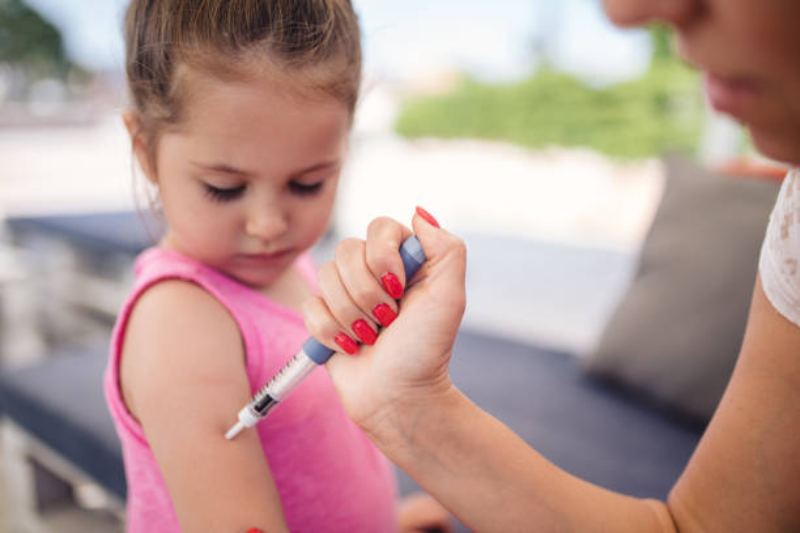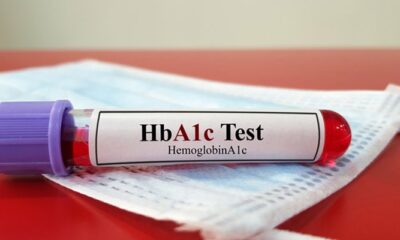Diabetes, a chronic condition affecting millions globally, can also strike children. While less common than in adults, childhood diabetes requires prompt diagnosis and careful management for optimal health and well-being. This guide equips parents, guardians, and caregivers with the knowledge and resources to navigate diabetes in children effectively.
Understanding Childhood Diabetes
There are two main types of diabetes that can affect children:
- Type 1 Diabetes: This autoimmune condition occurs when the body’s immune system destroys insulin-producing cells in the pancreas. Children with type 1 diabetes require lifelong insulin therapy to manage their blood sugar levels.
- Type 2 Diabetes: This type is becoming increasingly common in children, often linked to obesity and family history. In type 2 diabetes, the body either doesn’t produce enough insulin or becomes resistant to its effects. Treatment may involve lifestyle changes, medication, or a combination of both.
Early Detection: Recognizing the Signs
Early detection of diabetes in children is crucial for preventing complications. Here are some signs and symptoms to watch for:
- Excessive Thirst and Urination: A child who frequently urinates and seems excessively thirsty might be experiencing high blood sugar levels.
- Unexplained Weight Loss: Rapid weight loss despite a normal or increased appetite can be a sign of uncontrolled diabetes.
- Fatigue and Irritability: Children with uncontrolled diabetes may experience unexplained fatigue and become more irritable than usual.
- Blurred Vision: High blood sugar levels can affect the lenses in the eyes, leading to blurry vision.
- Slow Healing Wounds: If a child’s cuts or scrapes take longer than usual to heal, it might be a sign of poor blood sugar control.
- Fruity-Smelling Breath (Type 1 Diabetes): In severe cases of type 1 diabetes, a fruity-smelling breath can indicate the body breaking down fat for energy due to a lack of insulin.
Importance of Early Diagnosis
Early diagnosis of diabetes in children is essential for several reasons:
- Prevents Complications: Left untreated, high blood sugar levels can damage the eyes, kidneys, nerves, and other organs over time. Early diagnosis allows for prompt management and reduces the risk of long-term complications.
- Promotes Optimal Growth and Development: Uncontrolled diabetes can hinder a child’s growth and development. Early diagnosis ensures proper management to support healthy growth.
- Improves Quality of Life: Managing diabetes effectively allows children to participate fully in activities and lead active, fulfilling lives.
Diagnosis of Diabetes in Children
If you suspect your child might have diabetes, consult your doctor immediately. Diagnosis typically involves:
- Blood tests: These tests measure blood sugar levels to determine if they are abnormally high.
- Urine tests: Urine tests may check for the presence of ketones, a byproduct of the body breaking down fat for energy in the absence of sufficient insulin (more common in type 1 diabetes).
Treatment Options for Childhood Diabetes
The treatment approach for childhood diabetes depends on the type of diabetes diagnosed:
- Type 1 Diabetes:
- Insulin Therapy: Children with type 1 diabetes require lifelong insulin therapy to manage their blood sugar levels. There are different types of insulin and delivery methods (injections or pumps) available.
- Carbohydrate Counting: Learning how to count carbohydrates in food helps determine the appropriate amount of insulin needed before meals and snacks.
- Blood Sugar Monitoring: Regular blood sugar monitoring with finger pricks or continuous glucose monitors (CGMs) is crucial for children with type 1 diabetes.
- Type 2 Diabetes:
- Lifestyle Changes: Focus on a healthy diet, regular physical activity, and maintaining a healthy weight. These lifestyle modifications can significantly improve blood sugar control in children with type 2 diabetes.
- Medication: In some cases, medication such as oral medications or injectable medications may be needed to manage blood sugar levels.
Living with Diabetes: Building a Support System
Living with a chronic condition like diabetes can be challenging for both children and their families. Here’s how to build a strong support system:
- Healthcare Team: Work collaboratively with your child’s doctor, diabetes educator, registered dietitian, and other healthcare professionals to create a personalized management plan.
- Family and Friends: Educate loved ones about diabetes and how they can support your child. Encourage their understanding and participation in promoting healthy habits.
- Support Groups: Connecting with other families managing childhood diabetes can provide valuable information, encouragement, and a sense of community.
- Mental and Emotional Wellbeing: Children with diabetes might face emotional challenges. Seek professional support if needed to address anxiety, depression, or social difficulties.
Managing Daily Life with Diabetes
Here are some key aspects of managing a child’s diabetes on a daily basis:
- Diet and Nutrition: A healthy, balanced diet is crucial for managing blood sugar levels. Work with a registered dietitian to create a meal plan that caters to your child’s preferences and nutritional needs.
- Physical Activity: Regular physical activity helps with blood sugar control and overall health. Encourage your child to participate in activities they enjoy, like sports, playing outdoors, or dancing.
- School Communication: Work with your child’s school to develop a diabetes management plan and inform them about any special needs your child might have. This could include access to snacks, blood sugar monitoring during the day, or administering medication.
- Healthy Habits: Develop healthy routines for sleep, stress management, and medication adherence. Adequate sleep, stress-reduction techniques, and taking medication as prescribed are crucial for optimal diabetes management.
- Open Communication: Encourage open communication with your child about their diabetes. Answer their questions honestly and address any fears or anxieties they might have.
- Celebrating Milestones: Celebrate achievements, big or small, in your child’s diabetes management journey. This reinforces positive behaviors and keeps them motivated.
Technology and Tools for Effective Management
Technological advancements offer valuable tools for managing childhood diabetes:
- Continuous Glucose Monitors (CGMs): These devices provide real-time blood sugar data, allowing for adjustments in insulin and food intake.
- Blood Sugar Monitoring Apps: Apps can help track blood sugar levels, food intake, and medication doses, making it easier to manage diabetes on a daily basis.
- Insulin Pumps: These devices deliver insulin continuously or in programmed doses, providing more precise control over blood sugar levels.
Looking Forward: Research and Innovation
The field of diabetes management is constantly evolving. Here are some promising areas of research for childhood diabetes:
- Artificial Pancreas Systems: These closed-loop systems automate insulin delivery based on real-time blood sugar data from CGMs, offering greater control and convenience.
- Stem Cell Therapy: Research is exploring the potential of stem cells to regenerate insulin-producing cells in the pancreas, offering a potential cure for type 1 diabetes.
- Improved Insulin Delivery Methods: Developing painless and more convenient methods for insulin administration is an ongoing area of research.
Conclusion
Childhood diabetes can be effectively managed with early detection, a holistic treatment approach, and a strong support system. By working collaboratively with your healthcare team, adopting healthy habits, and leveraging available resources, you can empower your child to thrive despite diabetes. Remember, your child is not alone on this journey. With knowledge, support, and advancements in technology, children with diabetes can lead healthy, fulfilling lives.

 Diabetology2 weeks ago
Diabetology2 weeks ago
 Diabetology1 week ago
Diabetology1 week ago
 Diabetology2 weeks ago
Diabetology2 weeks ago
 Diabetology1 week ago
Diabetology1 week ago
 Diabetology1 week ago
Diabetology1 week ago
 Diabetology2 weeks ago
Diabetology2 weeks ago
 Diabetology1 week ago
Diabetology1 week ago
 Diabetology2 weeks ago
Diabetology2 weeks ago








